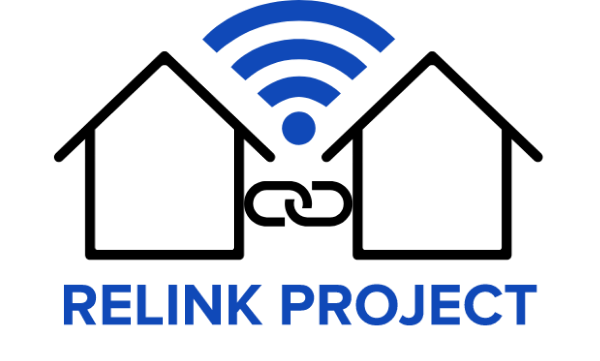Representing the SIFO RELINK team, PhD candidate Helene Teigen went to London in February to attend the PETRAs Internet of Things Research Hub workshop Living with Internet of Things. The event took place at Tate Modern museum on 8th and 9th of February 2019, and featured several exhibitions, combining art, research and technology, as well as talks. The workshop explored various themes related to life with Internet of Things, with a focus spanning from the individual to the societal.
Themes explored in the exhibition ranged from personally tailored entertainment, to environmental issues and technical security issues. We won’t go through all of the displays and talks in this post, but select some that show the thematic width of the workshop, and thus illustrate how IoT affect several aspects of our daily life.
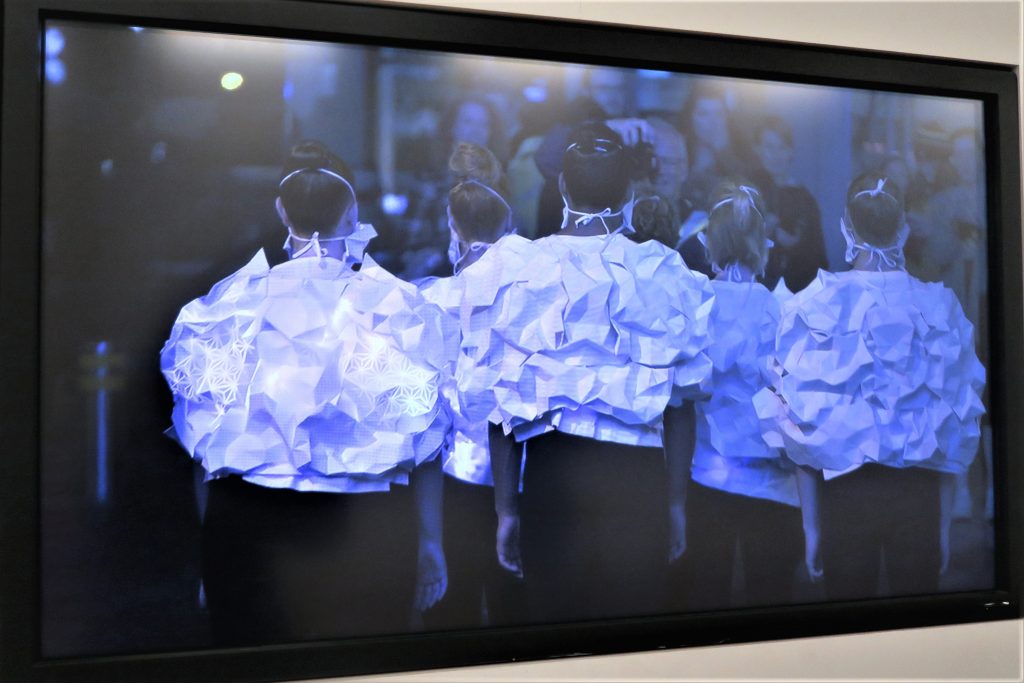
We’ll start with a display centered on the individual, technology and the environment. Artist Kasia Molga showcased two works. The first piece was a suit which looked like a white cloud with colorful LED lights in it. The suit included a raspberry pi computer, and sensors reacting to nitric oxide data from the exhaled breath of the wearer. This enabled the suit to register pollution levels in the air where the wearer was located, and for instance make trail paths showing the nitric oxide levels along the route.
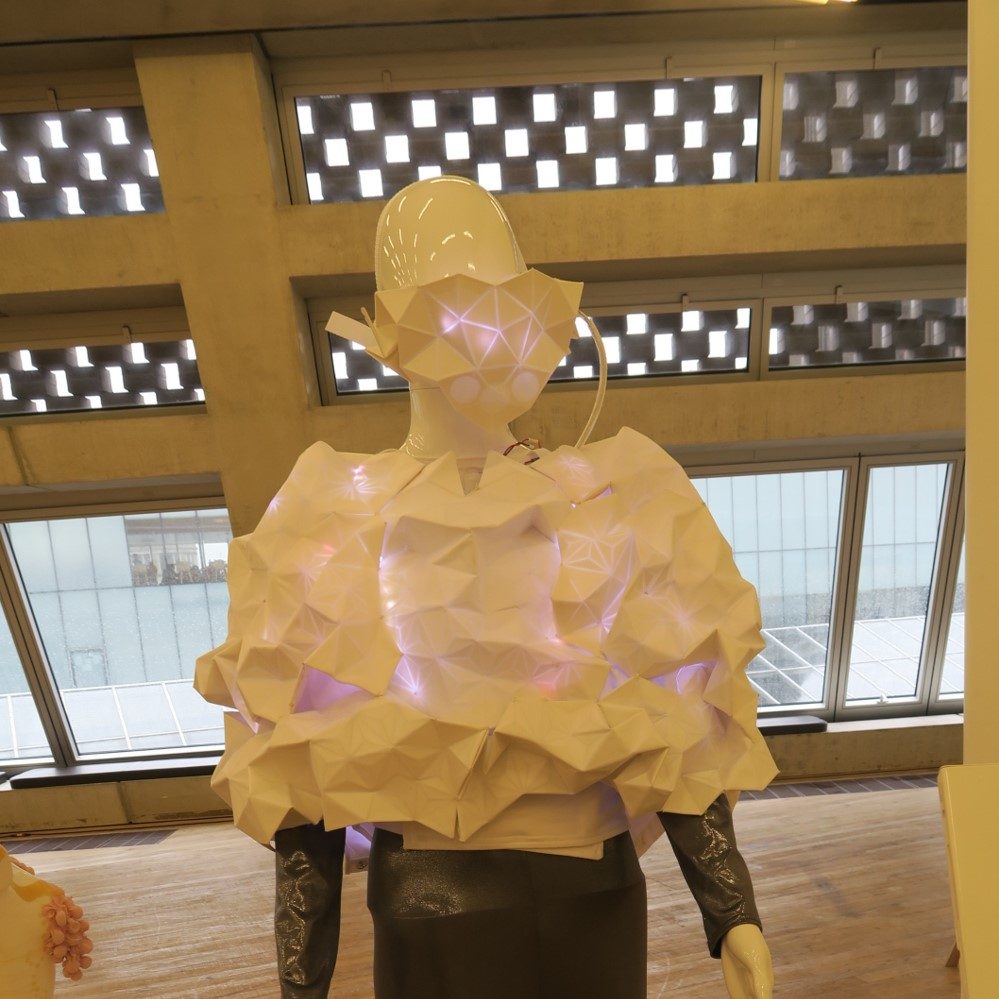
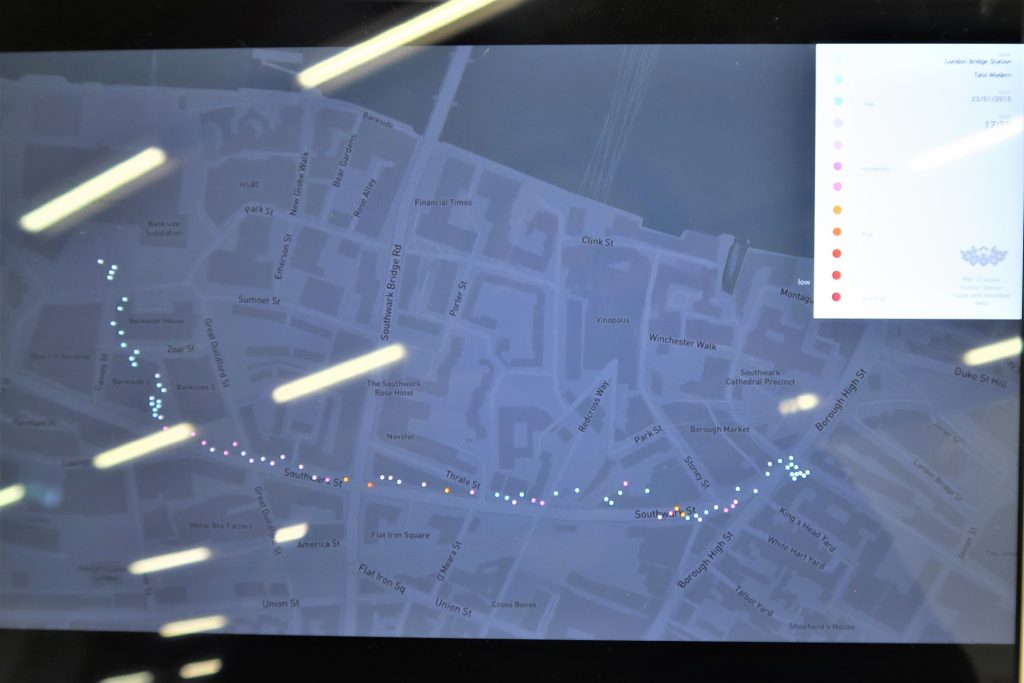
The other piece was a latex costume resembling the coral reeves in the Great Barrier Reef, with lights and sensors that reacted accordingly to data from the Great Barrier Reef when actual corals in the reef were registered as dying.
Both these pieces show how wearable technology can be used to create awareness of larger issues.
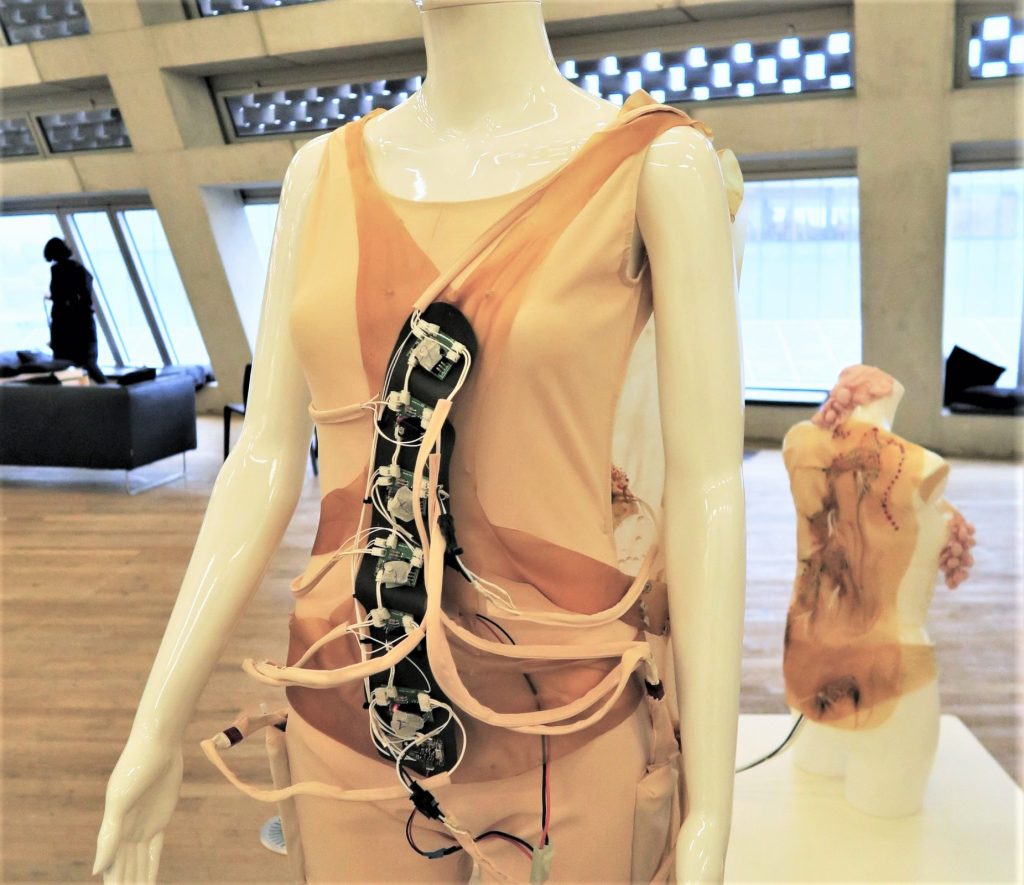
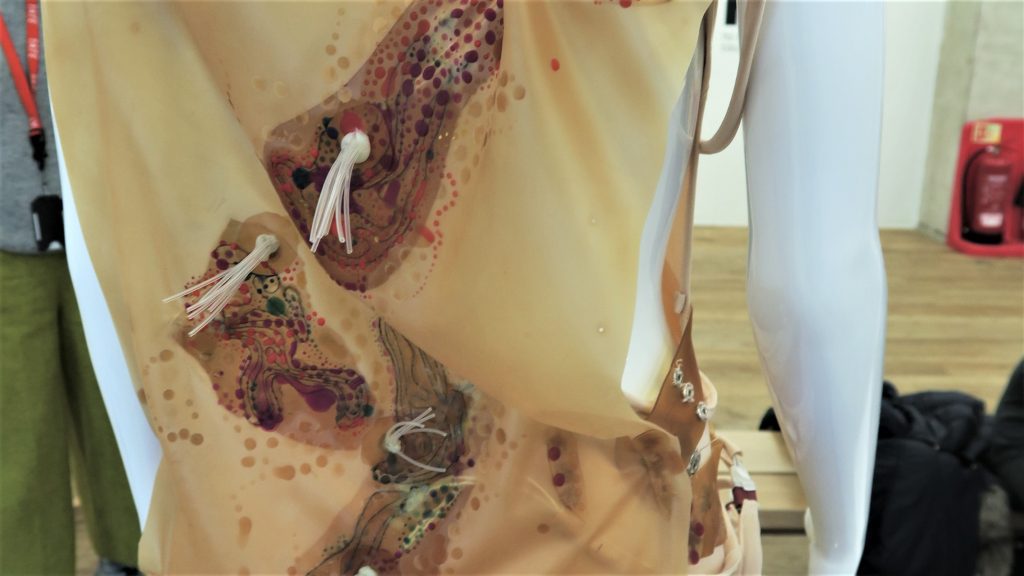
Moving the focus to household level combined with a sustainability perspective, Larissa Pschetz, Billy Dixon, Esteban Serrano and Chris Speed at the University of Edinburgh presented the Karma Kettle. This display was concerned with creating a more flexible energy grid, where domestic batteries help balancing the on and off-peak times and prices, demonstrating it through a game called ‘Karma kettles’.
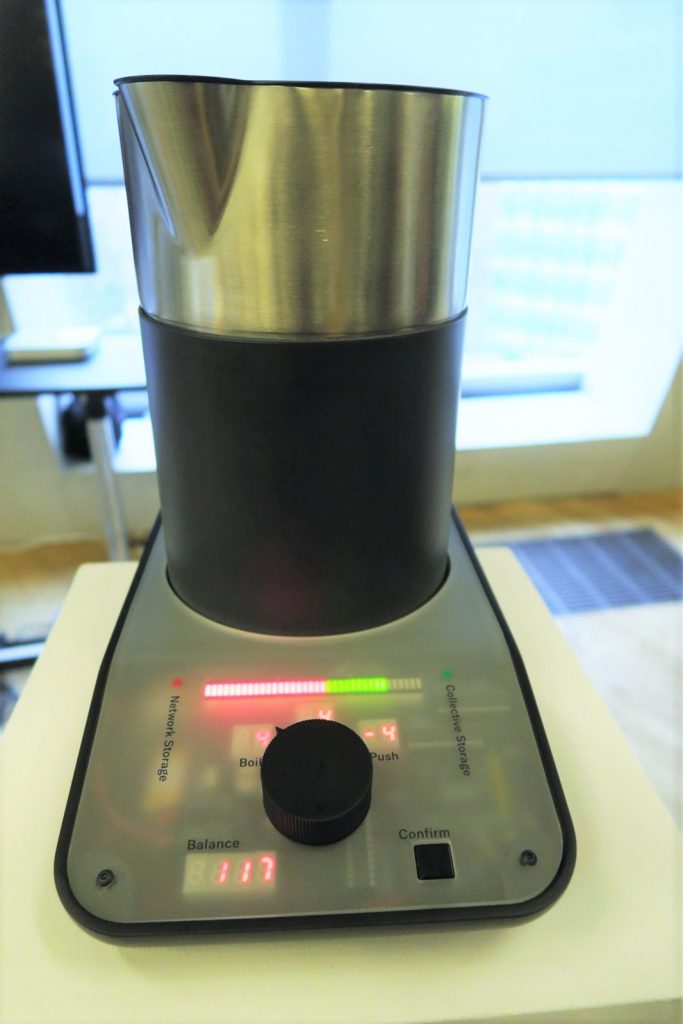
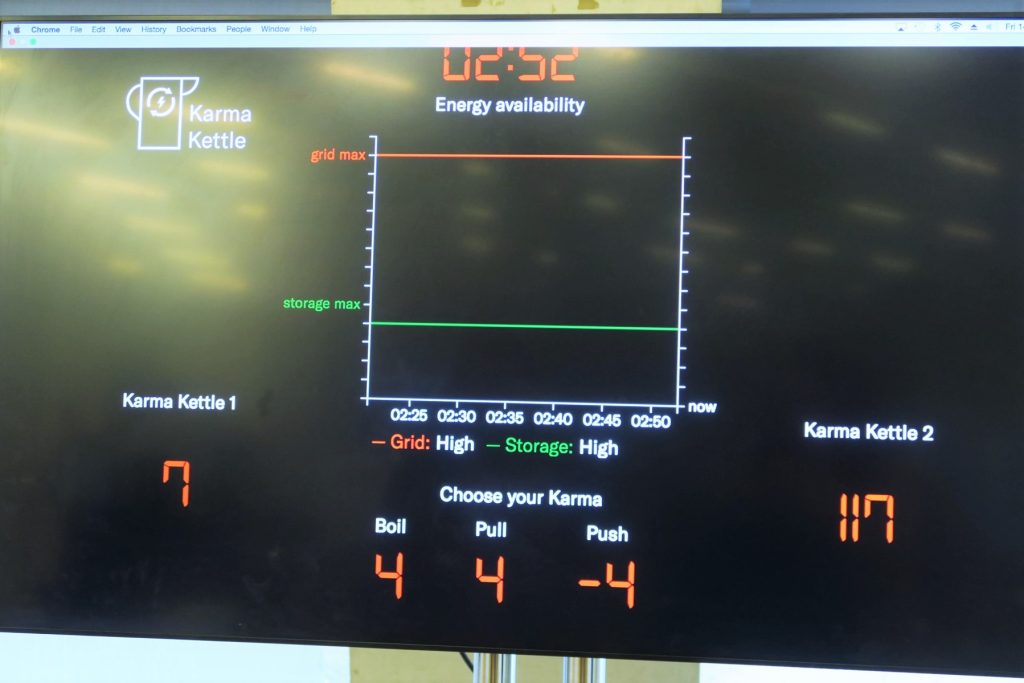
Staying on a household level, but moving to the entertainment side of everyday life, Lancaster University and BBC R&D, displayed a future living room, where technology is used to tailor the entertainment to the person or persons watching. Formed as an enclosed living room space with connected lamps, radio, blinds, and fan, a short film was played on a TV screen. The connected things in the room was linked to the film playing, responding to the events in the film. For instance, the fan in the room turned off when the characters moved from outdoors to indoors. Moreover, sensors and data from other IoT devices in the household are combined to create a tailored viewing experience, adjusting the music, coloring, and ending (positive or negative). For instance, the music was selected from previously registered preferences, and sensors captured facial expression, mood, degree of attention paid to the film while the film was playing to further adjust the viewing experience. The installment used pre-programmed data, but ideally the functions will vary according to user data collected in the household. The display also had incorporated consent and information aspects. Before the film started, one person had to give his or her consent using hand print, and at the end, the consent person received a receipt with all the logged activities and readings.
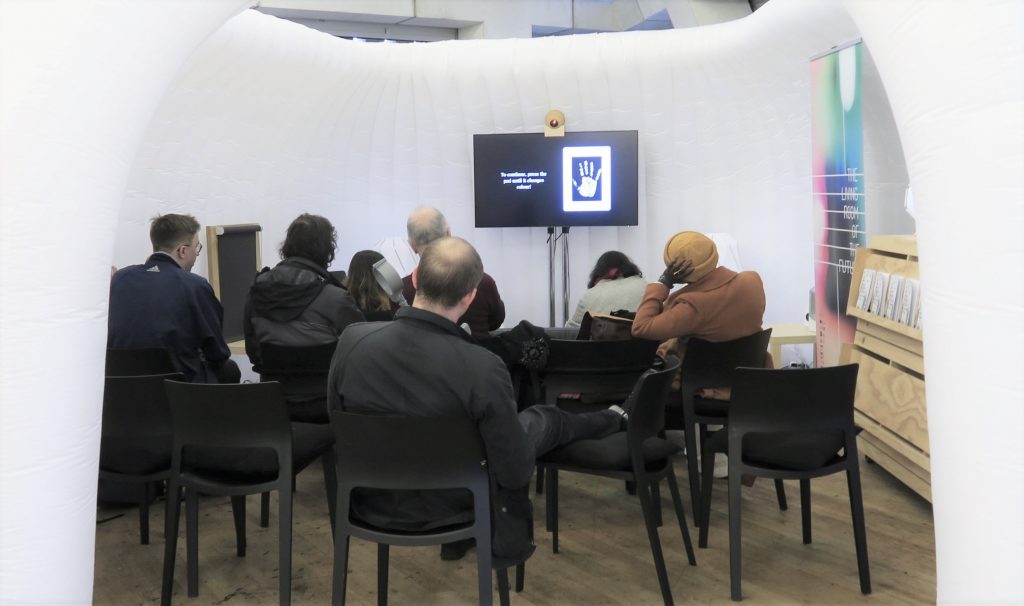
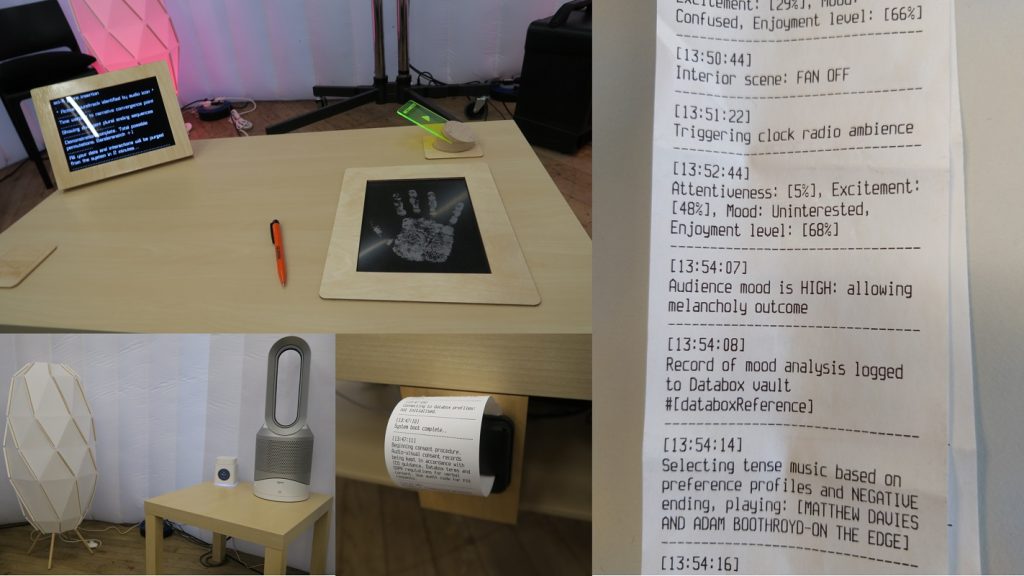
Other exhibitions were more concerned with the societal beneficial aspects of the technology. For instance, Dave Murray-Rust and Ella Tallyn from the University of Edinburgh, presented the Geopact, which is developed as a transport and delivery solution. On their website, they explain “Geopact collects and verifies location data from smart objects with certainty and security, (…) and uses smart contracts to harness the data, linking it to real-life transactions”. Although one of the aims of this invention is to provide security and certainty to transport systems, the display was not focused on the other side of the coin, which can be risk elements such as hacking or misuse.
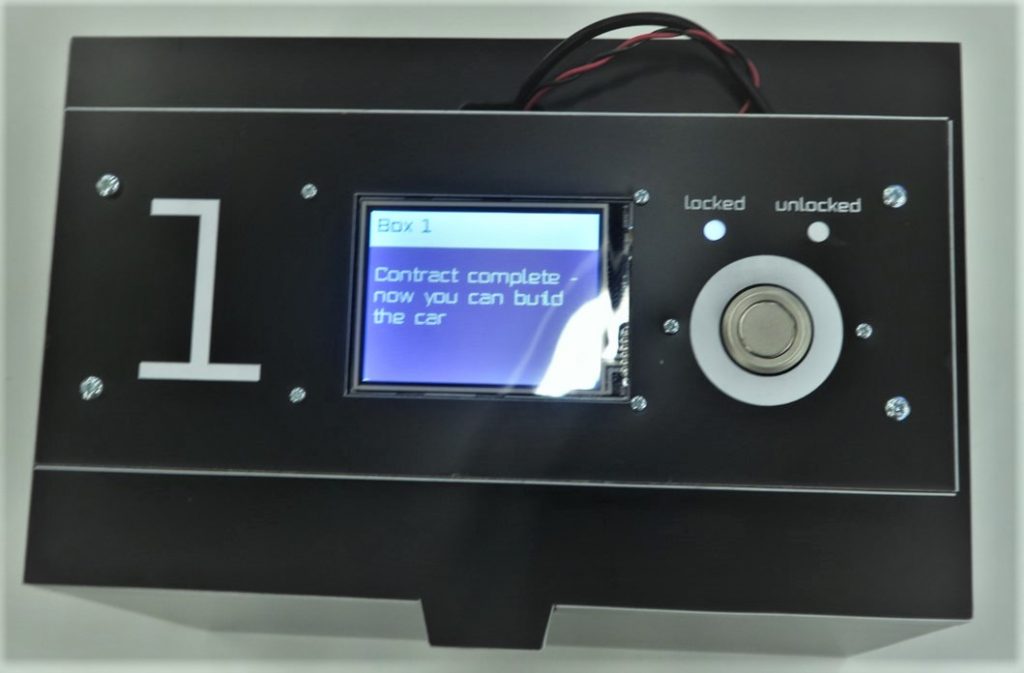
Hacking or malign intentions were however the main themes for Ed Moxon’s “Smart Utopia” display, from the Cyber Security Centre at the University of Warwick. With a model of a city, enabling demonstrations of how technology can be used to disrupt the infrastructure. The tension between possibilities and problem-solving on one side, and challenges and risks on the other was also prominent in the short talks by various speakers.
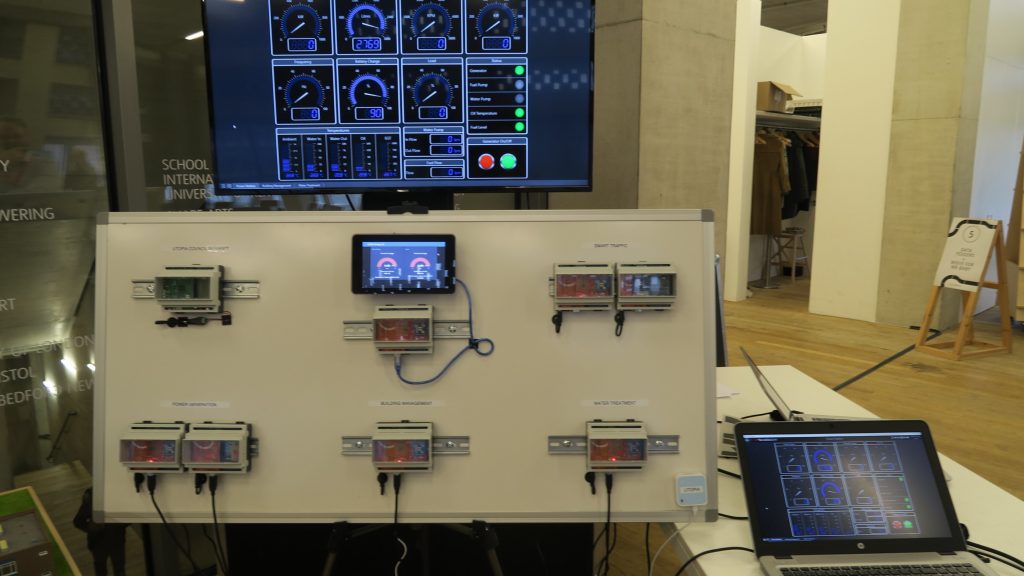
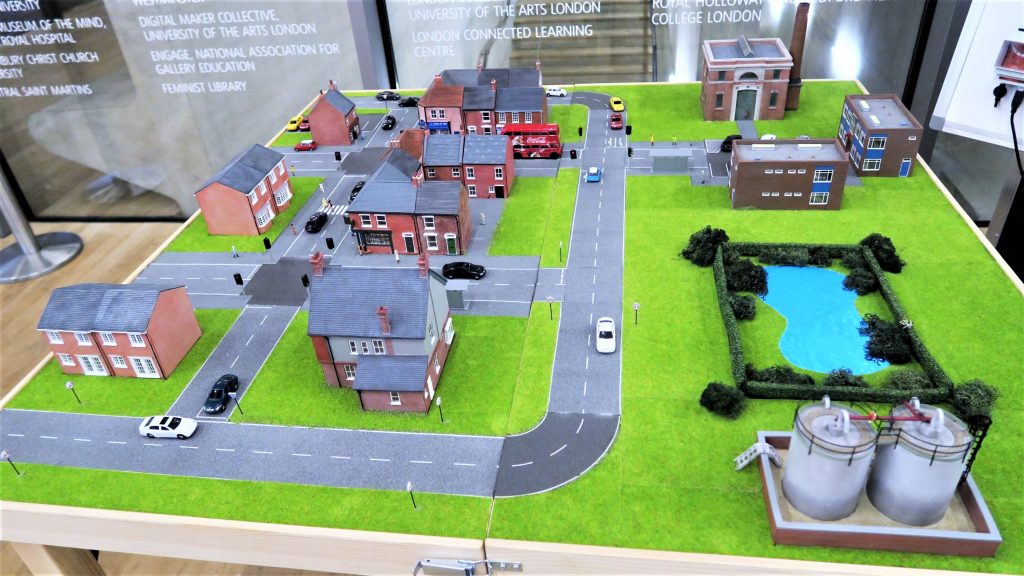
The Exhibition featured several displays and talks other than the ones we have showed here. The full program for the event can be found here.
It is worth noting that most of the displays had some notion of risk or security regardless of whether it was the main theme or not, enhancing the duality of the IoT technology. The exhibition thus relates to the overall discussions surrounding IoT, which is the positive and opportunistic perspective focusing on making everyday life simpler, as well as Entertainment, against the more cautious risk and security perspective. This duality is something we will explore further within the RELINK project.
